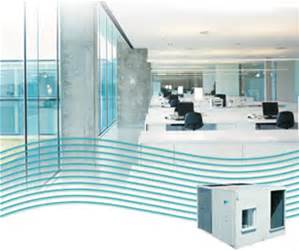LONDON — The latest report on the global commercial air conditioning market from Technavio provides an analysis of the most important trends expected to impact the market outlook from 2016 to 2020. The top three emerging trends according to the firm’s research analysts are:
• Integration with Internet of Things (IoT).
• Emergence of smart technology.
• Growing preference for interoperability.

INTEGRATION WITH IOT
The emergence of IoT platforms enables monitoring of various HVAC equipment. The IoT is used for effective energy management and to support preventive maintenance and remote diagnostics. The framework is comprised of two components, a cloud-enabled IoT platform and an IoT gateway. The platform enables services such as smart building management. Gateway components provide connectivity to HVAC equipment.
The framework supports features that include remote access and monitoring, and video monitoring.
EMERGENCE OF SMART TECHNOLOGY
In spite of the high initial cost, smart HVAC systems are increasingly becoming a necessary expense for large buildings. There is a perceptible shift in the market toward smart grids, smart metering, and building automation. Smart grids enable intelligent distribution that aids in minimizing power losses, while smart meters provide measurement and reporting of electricity consumption in real time. As HVAC systems are among the biggest consumers of energy, these smart technologies can accrue good savings by detecting faults in time and enhancing overall performance.
OEMs in the HVAC market are increasingly employing technologies such as big data, advanced analytics, and cloud computing for product differentiation to gain market share. Using these technologies, it is possible to perform trend analysis, pattern recognition, and cause and effect analysis. Big data and advanced analytics help in predicting future energy needs, and in complying with regulatory and statutory guidelines by furnishing complete proof of energy efficiency and performance.
GROWING PREFERENCE FOR INTEROPERABILITY
Interoperability ensures effective integration and ease-of-use of different components in a particular system supplied by various manufacturers. Building owners are increasingly requesting interoperability for commercial air conditioning components as it eliminates the need to engage with a single supplier. Therefore, manufacturers are using LonWorks or BACnet to make their systems open and ready for interoperability. However, open protocols in terms of interoperability are applied only at the field level and not fully implemented at the management level.
According to Technavio’s estimate, in 2015, 20 percent of air conditioning controllers worldwide still used proprietary protocols, but the figure is projected to decline somewhat to 15 percent by the end of 2016. This indicates that although manufacturers and integrators may seek interoperability and openness in their systems, installed systems may fall short of customers’ expectations in terms of seamless integration. Therefore, the ability to easily integrate systems will be a crucial deciding factor in the coming years for building owners in selecting a/c manufacturers.




















